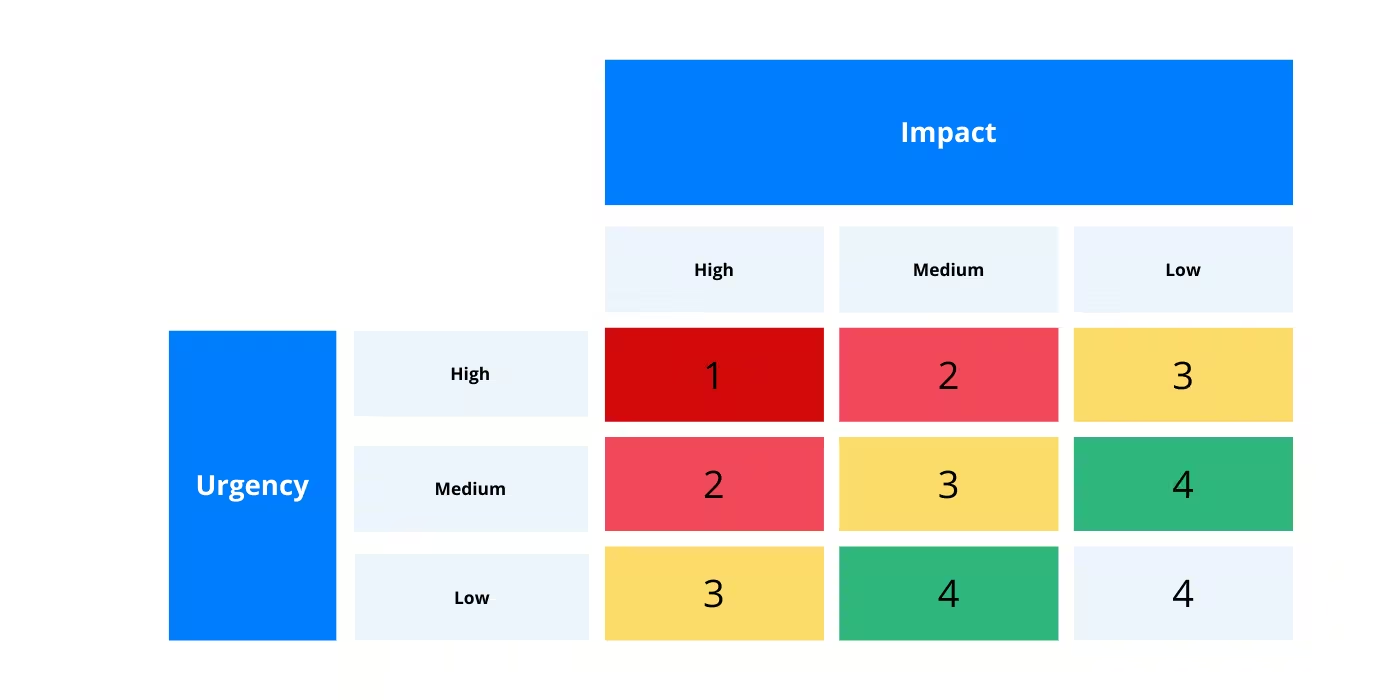
CALLGOOSE

CALLGOOSE
BLOG
29 November 2024 | William James
8 Minute Read
In the fast-paced world of IT operations, incidents are inevitable. When multiple users are affected by an incident, it can quickly escalate into a chaotic situation. To effectively manage and prioritize such incidents, organizations need a robust incident priority matrix. This matrix serves as a roadmap for handling incidents efficiently, ensuring that critical issues are addressed promptly.
In this comprehensive guide, we'll explore the importance of an incident priority matrix and provide practical steps for creating one that will transform your incident management process.
Understanding the Importance of an Incident Priority Matrix:
An incident priority matrix is a vital tool for organizations to categorize and prioritize incidents based on their impact and urgency. By establishing clear guidelines for incident classification and response, organizations can allocate resources effectively and ensure that critical issues are addressed with the appropriate level of urgency.

The key benefits of implementing an incident priority matrix include:
Creating an Incident Priority Matrix:
Now that we understand the importance of an incident priority matrix, let's explore the steps for creating one:
Define Incident Priority Levels: Start by defining a set of priority levels that reflect the urgency and impact of incidents. Common priority levels include:
Establish Criteria for Incident Classification: Define clear criteria for classifying incidents into each priority level, taking into account factors such as:
Document Incident Response Procedures: Develop documented procedures for responding to incidents based on their priority level. Outline the steps that should be taken to assess, triage, and resolve incidents at each priority level, including:
Test and Refine the Matrix: Once the incident priority matrix has been created, it's essential to test it in real-world scenarios and gather feedback from stakeholders. Use this feedback to refine the matrix and make any necessary adjustments to ensure its effectiveness in guiding incident response efforts.
An incident priority matrix is a valuable tool for organizations to prioritize and manage incidents effectively. By establishing clear guidelines for incident classification and response, organizations can allocate resources efficiently, improve response times, and mitigate the impact of critical issues on business operations. By following the steps outlined in this guide, you can create an incident priority matrix that will transform your incident management process and enhance the resilience of your organization's IT infrastructure.
Learn how Callgoose SQIBS can help to reduce the Downtime for businesses. Sign up for a our Freemium Plan today and experience the results. No credit card required.
Callgoose SQIBS is an effective On-Call schedule and Incident Management and Response platform keep your organization more resilient, reliable, and always on. It can integrate with any software's or Tools including any AI to reduce alert noise , automate the workflows and improve the effectiveness of escalation policies for global teams.

CALLGOOSE
SQIBS
Advanced Automation platform with effective On-Call schedule, real-time Incident Management and Incident Response capabilities that keep your organization more resilient, reliable, and always on
Callgoose SQIBS can Integrate with any applications or tools you use. It can be monitoring, ticketing, ITSM, log management, error tracking, ChatOps, collaboration tools or any applications
Callgoose providing the Plans with Unique features and advanced features for every business needs at the most affordable price.
Unique Features